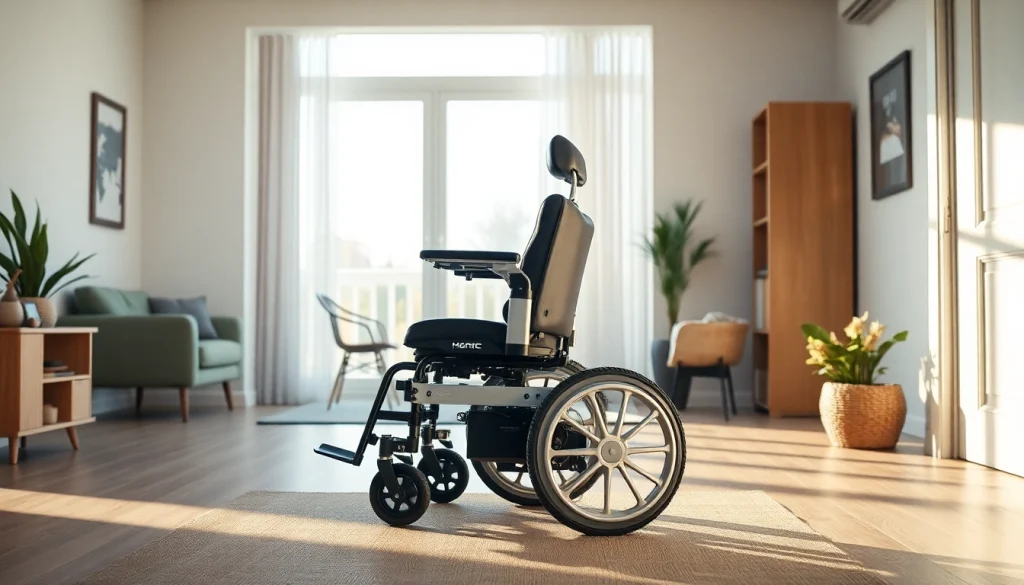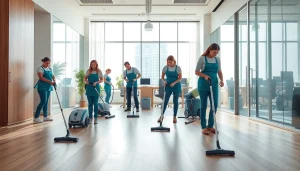
Understanding Power Wheelchairs
What is a Power Wheelchair?
A power wheelchair, also known as an electric wheelchair, is a mobility device that provides an efficient and comfortable means of transportation for individuals with mobility impairments. Unlike manual wheelchairs, which rely on human strength for propulsion, power wheelchairs are equipped with electrical systems that allow users to navigate various terrains with minimal effort. This significantly enhances independence and accessibility for those using the device. These wheelchairs are available in numerous models, each tailored to suit different user needs, ranging from lightweight designs for easy transport to heavy-duty options for robust outdoor conditions. For anyone facing mobility challenges, using a power wheelchair can dramatically improve quality of life by providing both mobility and freedom.
Key Features of Power Wheelchairs
Modern power wheelchairs come equipped with a variety of features designed to enhance user experience, safety, and comfort. Here are some essential features to consider:
- Electronic Controls: Most power wheelchairs use joystick controls, allowing users to easily maneuver the chair in any direction.
- Adjustable Seating: Many models feature customizable seating options, including height, tilt, and recline functionalities to support individual comfort and posture.
- Battery Life: Power wheelchairs are equipped with rechargeable batteries that offer different travel ranges depending on the model, with some able to cover up to 20 miles on a single charge.
- Suspension Systems: Some high-end models include suspension systems that provide a smoother ride over rough terrains.
- Portability: Many power wheelchairs are designed to be lightweight and foldable for easy transport, making them ideal for individuals on the go.
Benefits of Using a Power Wheelchair
Utilizing a power wheelchair offers numerous benefits that extend beyond mere mobility. Here are some key advantages:
- Increased Independence: Power wheelchairs empower users to navigate their environment without assistance, leading to improved self-sufficiency in daily activities.
- Enhanced Comfort: With ergonomic designs and adjustable seating, users can enjoy prolonged use without discomfort or strain.
- Accessibility: Power wheelchairs allow users to access social, recreational, and employment opportunities that may have been challenging or impossible otherwise.
- Health Benefits: Increased mobility can contribute to better physical health by promoting movement and engagement in daily activities.
- Customizability: Users can often tailor their power wheelchairs with accessories like cup holders, storage bags, or specialized seating to suit their specific lifestyle needs.
Choosing the Right Power Wheelchair
Assessing Individual Needs
Choosing the right power wheelchair begins with a thorough assessment of individual needs. Factors to consider include:
- Mobility Limitations: Understanding the severity of mobility limitations can help in selecting a wheelchair that provides optimal support and functionality.
- Living Environment: Users should consider whether they need a wheelchair primarily for indoor use, outdoor use, or both, as this will influence the selection of features such as wheels and drive systems.
- Health Conditions: Individuals with specific health concerns (e.g., cardiovascular issues, muscular dystrophy) may need specialized seating or support that caters to their conditions.
- Budget: Power wheelchairs can vary significantly in price. It is essential to find a balance between budget constraints and the necessary features for daily use.
Comparing Different Models
Once individual needs are assessed, the next step is to compare various models. Here are important criteria for model comparison:
- Weight Capacity: Check the weight capacity of the wheelchair to ensure it can safely support the user.
- Size and Dimensions: Make sure the wheelchair fits well in the designated spaces, including doorways and rooms in the home.
- Drive Type: There are front-wheel, mid-wheel, and rear-wheel drive power chairs. Each type has implications for maneuverability and performance based on the environment.
- Battery Life and Charging Options: Evaluate the range of different models to ensure the battery life meets your daily needs.
- User Reviews and Ratings: It’s valuable to read testimonials and reviews from current users to gain insight into reliability and performance.
Consulting a Professional
It’s often beneficial to consult with a healthcare professional or occupational therapist when selecting a power wheelchair. These experts can provide personalized recommendations based on medical history, lifestyle, and mobility requirements. They can also assist in navigating the complexities of insurance coverage and help access funding options for individuals who need financial assistance.
Power Wheelchair Operation and Maintenance
Basic Operation Tips for New Users
For new users, getting accustomed to operating a power wheelchair is essential for safety and comfort. Here are some tips for a smooth transition:
- Familiarize Yourself with Controls: Spend time learning how to operate the joystick or control panel effectively, practicing in a safe and open space.
- Learn to Stop Safely: Practice stopping gradually to become familiar with the stopping distance, which can vary depending on the model.
- Avoid Overloading: Ensure that you do not exceed the weight capacity of the wheelchair, as this can affect its performance and safety.
- Use Safety Features: Engage seat belts and other safety mechanisms available on your wheelchair for added security.
Routine Maintenance Guidelines
Routine maintenance is crucial for ensuring a power wheelchair operates at peak performance. Here are essential maintenance tasks:
- Check Battery Levels: Regularly inspect and maintain battery charge to avoid unexpected breakdowns.
- Inspect Tires: Keep an eye on tire pressure and tread wear to ensure safe navigation.
- Clean the Chair: Regular cleaning can prevent build-up of dirt and grime, which can affect components and overall appearance.
- Professional Servicing: Schedule professional inspections periodically to check the electrical systems and mechanical components for any potential issues.
Common Troubleshooting Techniques
Power wheelchair users may encounter common issues that can usually be troubleshooted effectively. Here are some situations and tips to resolve them:
- Wheelchair Won’t Move: Check the battery level, ensure the wheelchair is powered on, and confirm that the joystick is engaged properly.
- Battery Draining Quickly: Assess if the battery is old and needs replacement or if there are systems that are draining power unnecessarily.
- Strange Noises: Listen for unusual sounds during operation, which may indicate mechanical issues. Consult a professional if noises persist.
Adapting Your Home for a Power Wheelchair
Making Spaces Accessible
Adapting your home to accommodate a power wheelchair is a critical step toward enhancing independence and ensuring safety. Here are key considerations:
- Clear Pathways: Remove any obstacles that may impede movement within the home such as furniture or rugs.
- Doorway Width: Check and, if necessary, modify doorways to meet accessibility standards, allowing ease of entry and exit.
- Curb Cuts: Ensure that access points to outdoor areas are equipped with ramps or curb cuts for seamless movement.
Essential Home Modifications
In addition to clearing spaces, some home modifications may be necessary to improve accessibility:
- Bathroom Modifications: Install grab bars, use shower chairs, and consider roll-in showers or walk-in tubs for easy access.
- Kitchen Adjustments: Lower countertops and install pull-out shelves to facilitate easy access to cooking and dining amenities.
- Bedroom Accessibility: Ensure that the bed height allows for easy transfer, and consider installing a lift for greater access if needed.
Safety Considerations
Safety should always be a top priority. Here are some tips to ensure a safe environment for power wheelchair users:
- Proper Lighting: Ensure that all spaces, including entrances and hallways, are well-lit to prevent accidents.
- Emergency Plan: Create an emergency exit plan with pathways clear for an easy exit in case of a power failure or emergency situation.
- Regular Checks: Conduct routine safety checks in the home to identify and rectify potential hazards.
Resourcing and Support for Power Wheelchair Users
Government Assistance Programs
Many governments offer assistance programs to support those needing power wheelchairs. Research local resources, which may include grants, subsidies, or assistance in obtaining funding for equipment purchases. These resources can be a vital lifeline, allowing individuals to acquire the mobility aids they need.
Community Support Networks
Support networks can offer valuable resources, guidance, and companionship for power wheelchair users. Many communities have local organizations and groups aimed at fostering connections among individuals facing similar challenges. Joining these networks can provide emotional support and practical advice from shared experiences.
Online Resources and Forums
The internet has a wealth of resources, including forums, blogs, and websites dedicated to power wheelchairs. These platforms often provide experts’ opinions, user reviews, tips, and discussions on common issues. Engaging in online discussions can be a dynamic way to access information and connect with others in the mobility community.






